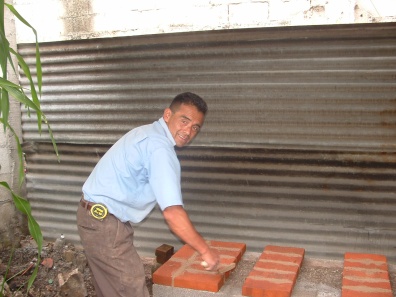For centuries, the Maya of Guatemala and other Central American countries have cooked on stone fires built on the dirt floors of household kitchens. Today, as indigenous people of Maya descent, they continue to cook using the ways of their ancestors. Increasingly this is leading to a variety of different health issues.

As a result, many homes are perpetually filled with toxic wood smoke that causes serious health problems, particularly for women and children. For those reading, this blog about our Guatemala Stove Project times has changed little over hundreds of years.
Eye infections, chronic respiratory illness, and other health problems are frequent. A secondary problem is the deforestation of Guatemala as wood is needed daily to fire the family cookstove.
In Guatemala, several NGO’s Non-Government Organizations exist for the sole purpose of attempting to solve this problem related to the health of the families and the need to harvest wood each day to cook simple meals.
These NGOs with enticing websites, case histories, and success storied interest individuals to donate money so that a stove offers greater efficiency and yes clean air in the family home is the promoted means to gain donations.
The problem we have observed about developing a Guatemala Stove Project was while many NGOs offer great wood stove designs they fail to understand the traditional means of cooking these new stoves do not offer the woman of the household.
For generations, women have cooked corn dough on what is called a plancha. The first flattop grills originated in Mexico and Central America for cooking corn dough.
These flattop grills were made of clay. With the arrival of Spaniards, the griddles were manufactured of metal materials. Spaniards adopted these grills with the name plancha, which means “metal plate”.
Lake Atitlan Wood Stove Project
For those travelers that have visited Guatemala one will see in the markets and in some small shops women cooking on what looks like a tub with an almost flat surface. In our design or thinking about the Guatemala Stove Project, we tool this design into consideration.
Searching online hundreds of designs exist for the perfect wood-burning cookstove. We landed on what is called the Rocket Stove as the basis for our initial design.
The Rocket stove is used in Haiti as one country that has adopted this concept of a clean-burning, high efficient simple to use wood cookstove.
Unlike most NGO’s and we are not attempting to be NGO’s we wanted the idea of our Guatemala Stove project to be a means that a small community could manufacture or make their stoves without the outside influence of others.
We landed in San Antonio Aguas Calientes is a municipality in the Guatemalan department of Sacatepéquez outside of Antigua Guatemala. This is how our story begins for our Guatemala Stove Project.
An amazing local woman named Sabina who is considered one of the region’s best Back Strap weavers and a close friend who wanted a new stove lives in San Antonio Aguas Calientes.
She has a gas stove she wanted a wood stove, back to our issue about tradition, change, and acceptance of the woman that have to cook on these stoves. With the help of Sabina’s husband, the idea began for how to design, build and create the perfect Guatemala Wood Cooking Stove.
Our Guatemala Stove Project a site developed from research and visiting places in Guatemala that made wood stoves landed us with the following obstacles:
The Stove had to be easy to make or manufacture with materials easily found, high efficiency, meaning less fuel, had to be cheap, the woman would have to be accepting of the design and a project that without training a village could build these stoves.
Months past and we finally came up with the design that met all the requirements but one. Who in the Village of San Antonio Aguas Calientes Guatemala could build these stoves.
With Sabina and her husband’s help come to Jeronimo a local welder with a small dirt floor shop and yes a stove that needed to be replaced to feed his ten children and eliminate the smoke and high use of fuel for his family.
The stove is made out of a used metal barrel, something you would find to hold oil for cooking, inside is the key to the design using the Rocket Stove Technology. Around the firebox, we used Volcanic Ash, lots of ash from the Volcanos around Guatemala this was the insulator for the firebox. The cooking surface or plancha was interchangeable, cook on the flat surface or change to have a pot fit onto the cooking surface.
The pictures show Jeronimo firing up his Guatemala Wood Stove. The next picture of the woman sitting in front of an open fire is Jeronimo’s family and how they cooked before.
Many NGO’s seek donations ranging from $120 US to $250US so that a stove can be placed in a Guatemala Family. Our Guatemala Stove Project stove with everything taken into consideration costs under $35 US.







